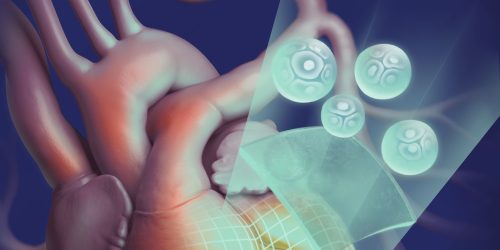
In a world-first, Dr Carmine Gentile and his team of researchers have demonstrated that bio-engineered heart tissues can safely and effectively help patients recover from the damage caused by an extensive heart attack.
The new technology creates personalised ‘bio-inks’ made of a patient’s own stem cells. The ‘bio-inks’ are then used to 3D-print cardiac tissues to repair areas of dead tissue caused by heart attacks.
Dr Carmine Gentile’s research study, supported by Heart Research Australia, has shown a better understanding of how bio-engineered heart tissues work in the body after their transplantation. The study demonstrated that bio-engineered patches were the best and most robust treatment of heart failure – patches generated with other approaches either did not induce any improvement or the improvement was inconsistent.
“Our bio-engineered patches promise to be safer, more consistent and cost-effective for the patient.” – Dr Carmine Gentile
Cardiovascular disease is the leading cause of death worldwide. In Australia, it accounts for about one in four deaths – claiming a life every 12 minutes.
Heart failure is a frequent complication of heart disease, with inadequate blood supply resulting in the death of heart tissue in an affected area. Life-long drug therapy may be required as a result, and end-stage heart failure means some patients join the waiting list for a heart transplant.
The technology used in Dr Gentile’s research, will enable patients to use their own stem cells to create the heart ‘patches’. Not only do these patches potentially dramatically reduce the trauma and cost of a heart transplant, but also avoid hurdles such as a body rejecting donor tissues.
These findings have been published in the world-leading academic journal, Bioprinting. Further testing for long term effects of this technology is underway before starting clinical trials.
Heart Research Australia, a key funding partner of this research, commends the advances made by Dr Gentile and his research team in striving to improve the devastating statistics surrounding heart disease and we are excited about the potential of this technology to help the hundreds of thousands of people affected by heart failure each year.
Heart Research Australia would be hugely appreciative of any donation regardless of the size to help us fund more life saving research like that of Dr Carmine Gentile. Any donation small or large can make a significant difference to the future heart health of Australians.
To read about more ground breaking work our researchers are doing, click here.
